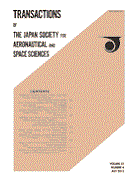Volume 49, Issue 165
Displaying 1-9 of 9 articles from this issue
- |<
- <
- 1
- >
- >|
-
2006Volume 49Issue 165 Pages 129-136
Published: 2006
Released on J-STAGE: December 20, 2006
Download PDF (148K) -
2006Volume 49Issue 165 Pages 137-145
Published: 2006
Released on J-STAGE: December 20, 2006
Download PDF (318K) -
2006Volume 49Issue 165 Pages 146-153
Published: 2006
Released on J-STAGE: December 20, 2006
Download PDF (346K) -
2006Volume 49Issue 165 Pages 154-161
Published: 2006
Released on J-STAGE: December 20, 2006
Download PDF (584K) -
2006Volume 49Issue 165 Pages 162-168
Published: 2006
Released on J-STAGE: December 20, 2006
Download PDF (198K) -
2006Volume 49Issue 165 Pages 169-174
Published: 2006
Released on J-STAGE: December 20, 2006
Download PDF (279K) -
2006Volume 49Issue 165 Pages 175-180
Published: 2006
Released on J-STAGE: December 20, 2006
Download PDF (120K) -
2006Volume 49Issue 165 Pages 181-186
Published: 2006
Released on J-STAGE: December 20, 2006
Download PDF (321K)
TECHNICAL NOTE
-
2006Volume 49Issue 165 Pages 187-191
Published: 2006
Released on J-STAGE: December 20, 2006
Download PDF (230K)
- |<
- <
- 1
- >
- >|
